The region’s tough but triumphant Irish roots are celebrated every year at Canada’s Irish Festival.
It’s no secret why folks along the mighty Miramichi River celebrate their Irish heritage so fiercely. When your roots and a good part of the history that followed are steeped in sorrow and loss, rejoicing in what is good about life and your culture is that much more important.
This region, about two hours’ drive north of New Brunswick’s economic center, Moncton, has taken body blows over the centuries, from famine and fire to war and mill closings that have tried the resolve of a largely Irish population.
But first amongst the woes, surely, was the string of coffin ships, full to overflowing with Irish fleeing starvation, that made their way up the Miramichi from the Atlantic Ocean in 1847.
In this region of 28,000, about 60 percent of whom are Irish, it is simply referred to as “The Tragedy of 1847.”
The first ship to arrive was the Looshtauk. Turned away at Sydney, Nova Scotia by officials terrified of the sickness and close to 100 dead on board, Captain John Thain hoped for better fortune up the Miramichi, where, in lieu of a quarantine station, the authorities had hastily erected a lazarattoo on Middle Island in the center of the river.
The Looshtauk had sailed from Liverpool on April 17 with 462 passengers living in deplorable conditions and arrived at Middle Island on June 2, in complete crisis. After months of misery, 242 of the passengers perished at sea or on the island. But matters worsened as six other ships followed the Looshtauk up the river in the days and weeks that followed, only one ship with a clean bill of health.
To their credit, the townspeople in what was then called Chatham rallied to help in the wake of the disaster, breaking from the planting season to round up food, clothing, bedclothes and medical aid for the troubled ship. After some debate, town officials sent workers to Middle Island to convert fish shacks into temporary shelters.
The heroic efforts of a local physician, Dr. John Vondy, 28-years-old, the only doctor who chose to live on Middle Island while caring for the sick, ended a month after the Looshtauk docked, when he contacted Typhus from his patients and died.
Vondy, who had received his medical training in London, had returned to his native Miramichi to practice.
All this is hard to envision under a summer’s blue sky on the bucolic island today, especially when the greater world comes to pay respects as Canada’s self-appointed “Irish Capital” stages its Irish Festival on its streets, waterfront, arenas and public gathering spots.
A Celtic cross monument and a trail around the island, now connected to the river’s bank by a causeway, provide simple and moving tributes to a terrible time.
“From that tragedy has sprung a tremendous sense of pride in Irish culture and the ancestors,” says Veronique Arsenault, the festival’s president. “We must always remember that, learn from it and move forward.”
Over four days, from July 18 to 21, local folks and more than 10,000 visitors will celebrate the festival’s 30th anniversary. They will party, parade, eat, dance, see art exhibits and theater, enjoy an almost endless stream of musicians, and check out the New Brunswick provincial archives and census records of Irish immigrants.
The closing moments of the festival always come back to 1847, with a remembrance of June 2 of that year and the misery that followed.
“It’s very emotional,” said Hughie McElvaney, mayor of Monaghan, the Irish town that twinned with Miramichi at the first Irish Festival in 1998. “So many Irish were lost there.”
But the Mayor was also was impressed with the spirit of the citizens.
“What struck us here was the Irishness of the people, their hospitality and the joy of the celebration, the dancing and singing. To know they’re headed to their 30th anniversary is great.”
McElvaney, who visited last summer with a small delegation to honor the lives of those who perished, was so moved he reached into his own pocket to help the Nelson Doyle Dancers, a local Irish group, make a trip to Ireland.
When he learned fundraising had fallen short and several dancers wouldn’t be able to go, he made up the difference.
For Paul Parsons of Portland, Maine, an Irish dance and music enthusiast, the Miramichi festival was “the largest Irish-Celtic celebration I have been to.”
Parsons, 33, said he was impressed with the way the town was dressed up, the breadth of entertainment, and the fact that the Irish Ambassador to Canada attended. He also counted O’Donaghue’s as one of the nicest Irish pubs of the hundreds he’s sampled.
The Acadians
Nearby Beaubears Island, accessible by ferry, also has a very interesting history. The largest refuge for Acadians (descendants of the 17th century French colonists) in maritime Canada during what has been called The Great Expulsion or The Great Exportation.
The French-speaking settlers were torn from their lands in 1755 by fearful English crown forces when they refused to swear allegiance to King George II as the Seven Years War between England and France was about to break out.
Somewhere between 1,500 and 3,000 Acadians fled to the island to forge new lives, but disaster soon struck.
In 1756, ships with provisions sent from Quebec were delayed due to strong headwinds and then postponed as winter closed down the St. Lawrence River. The settlement slowly starved. By the end of the 19th century, the island appears to have been deserted. It was acquired by the O’Brien family in 1920 and willed to the government of Canada in 1973 following the death of Joseph Leonard O’Brien, a former lieutenant governor of New Brunswick.
The anguish of the Acadians is depicted by historical character actors on the island. It is riveting theater.
Visitors looking for lighter entertainment will enjoy a 90-minute bilingual river trip on the Max Aitken with Captain Azade Hache, who offers Miramichi lore with his own whimsical take. And for a bit of adventure, Stewart’s Tubing offers a journey down a tamer, stretch of the waterway on inner tubes.
For a really different experience for folks on a budget, tree house accommodation at Camping Miramichi is an option. Essentially small cabins on supports built around pine trees, it’s a small step up from camping and a novel overnight stay heavy with pine scent and bird calls.
Two of the best accommodations in the area are the Rodd Miramichi River, a modern hotel with lots of amenities, and the Governor’s Mansion, an antique-filled rambling inn with large rooms, comfy beds and massive breakfast spreads.
Visit www.canadasirishfest.com for more information.

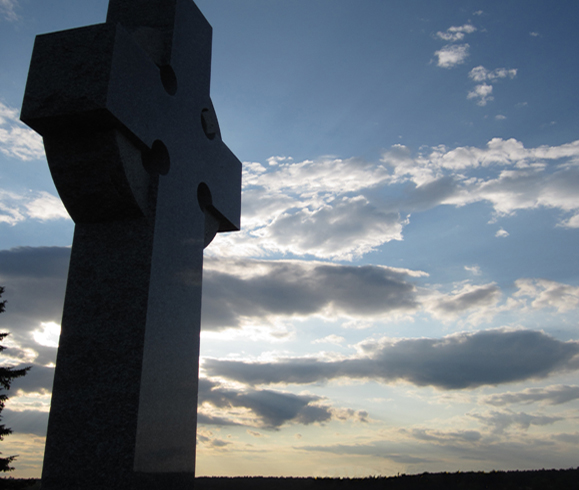


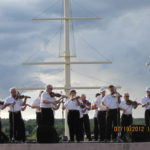
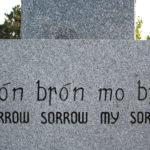

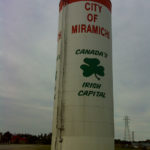
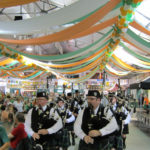
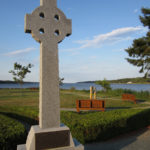
Fascinating tale from Miramichi. Amazing how we Irish know so little of what became of our Famine emigrants. I would very much like to repost this on my blog, if you are agreeable?
I to am amazed at how little I knew/know. What ABB array of emotions I felt reading this article. We need to be passing on these stories. And we won’t why our children doubt seem to be involved with family events and are so detached from society as a group. It’s shameful. We owe so much to those brave souls who left their home as bad as it must of been to get on a ship and go with no certainty. The size of our inner strength comes from our ansestors for sure.